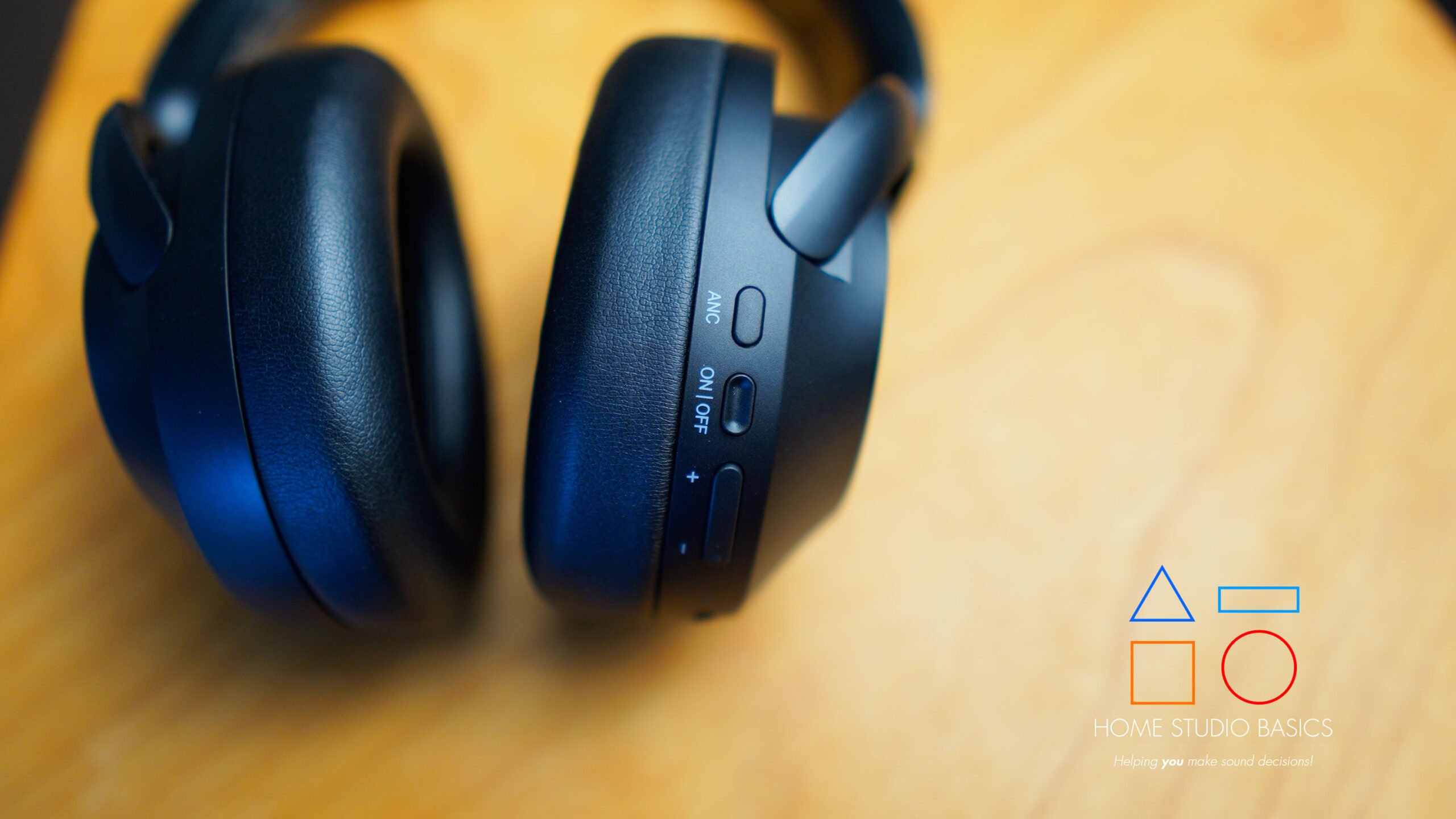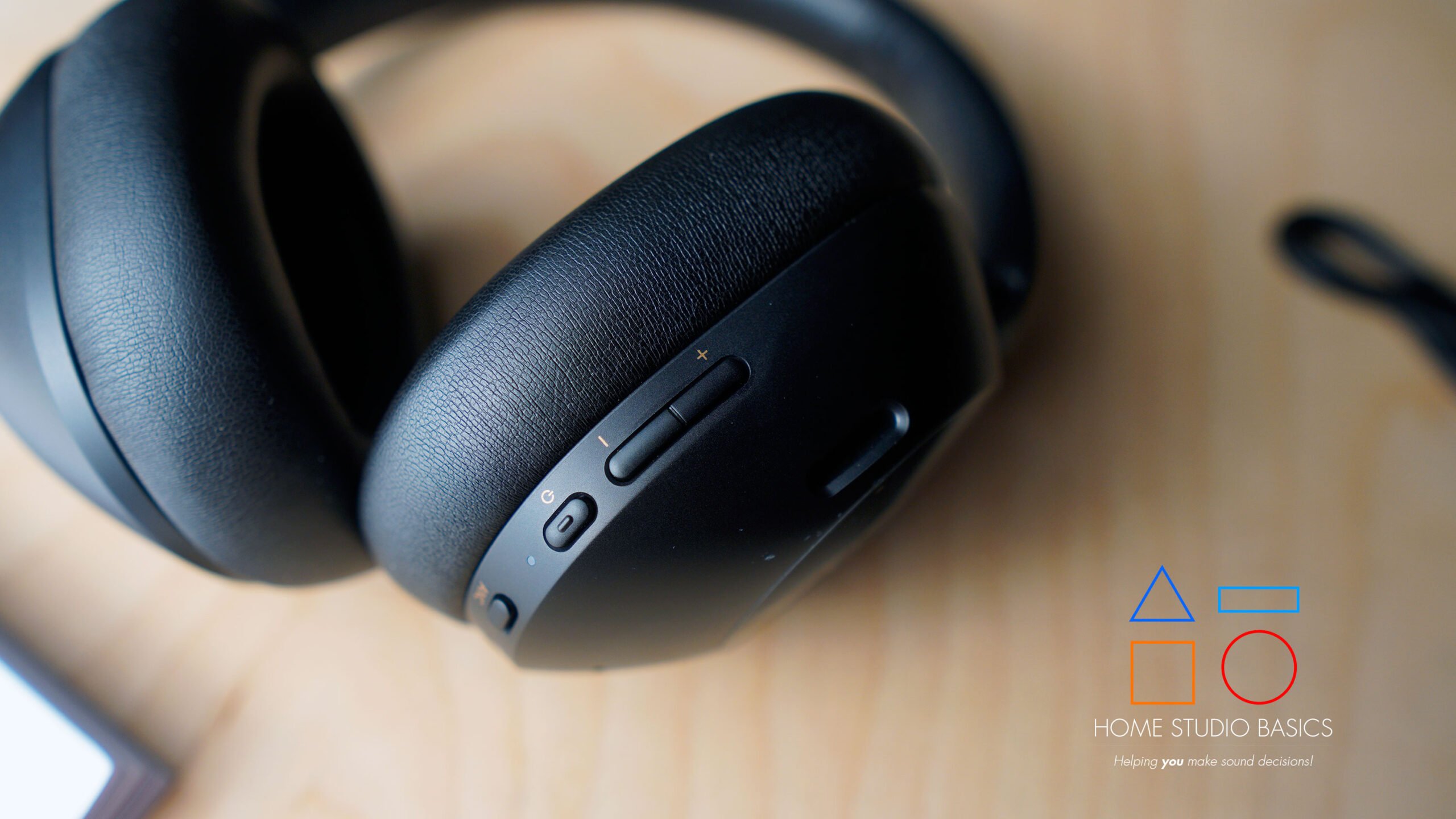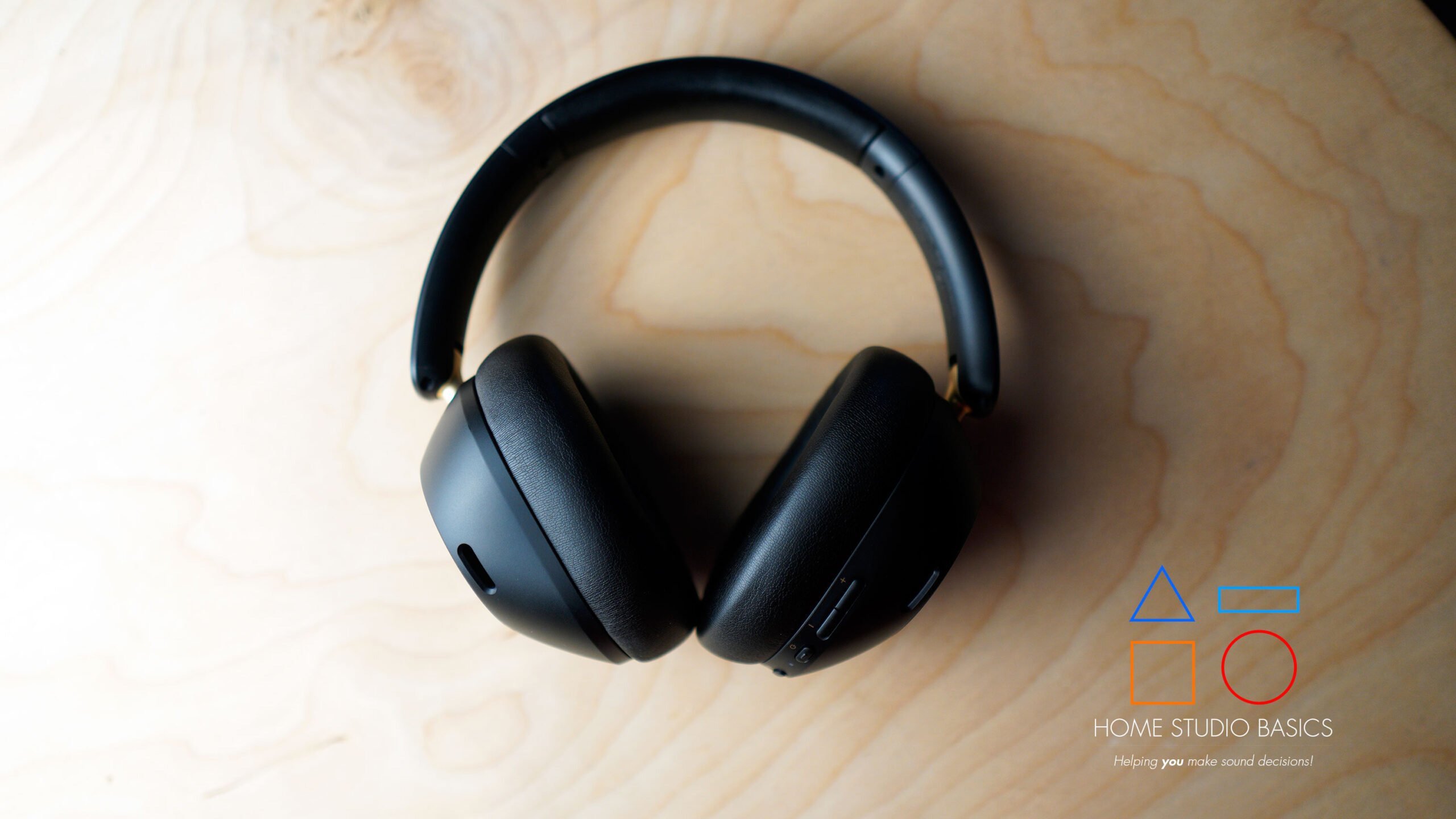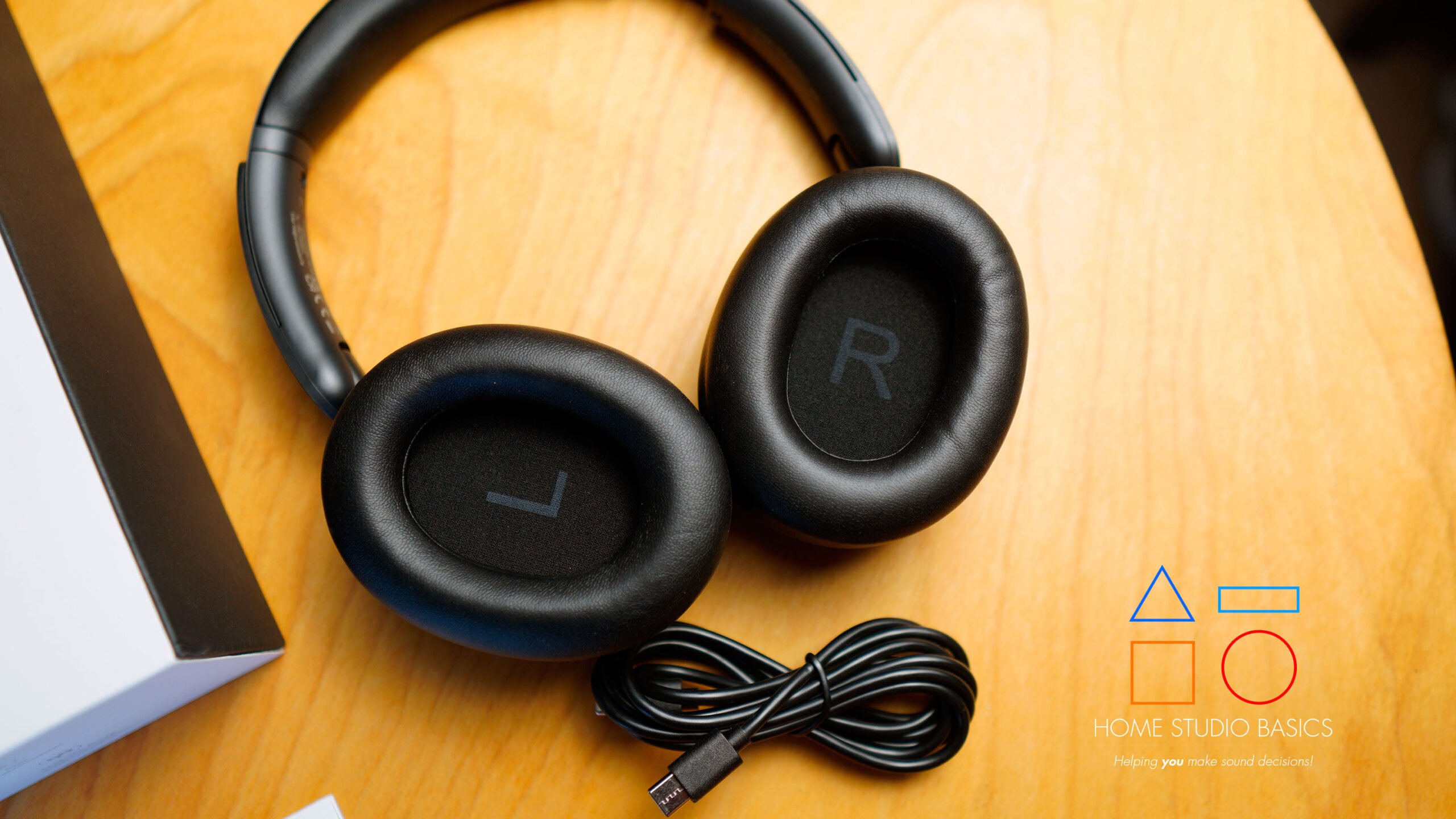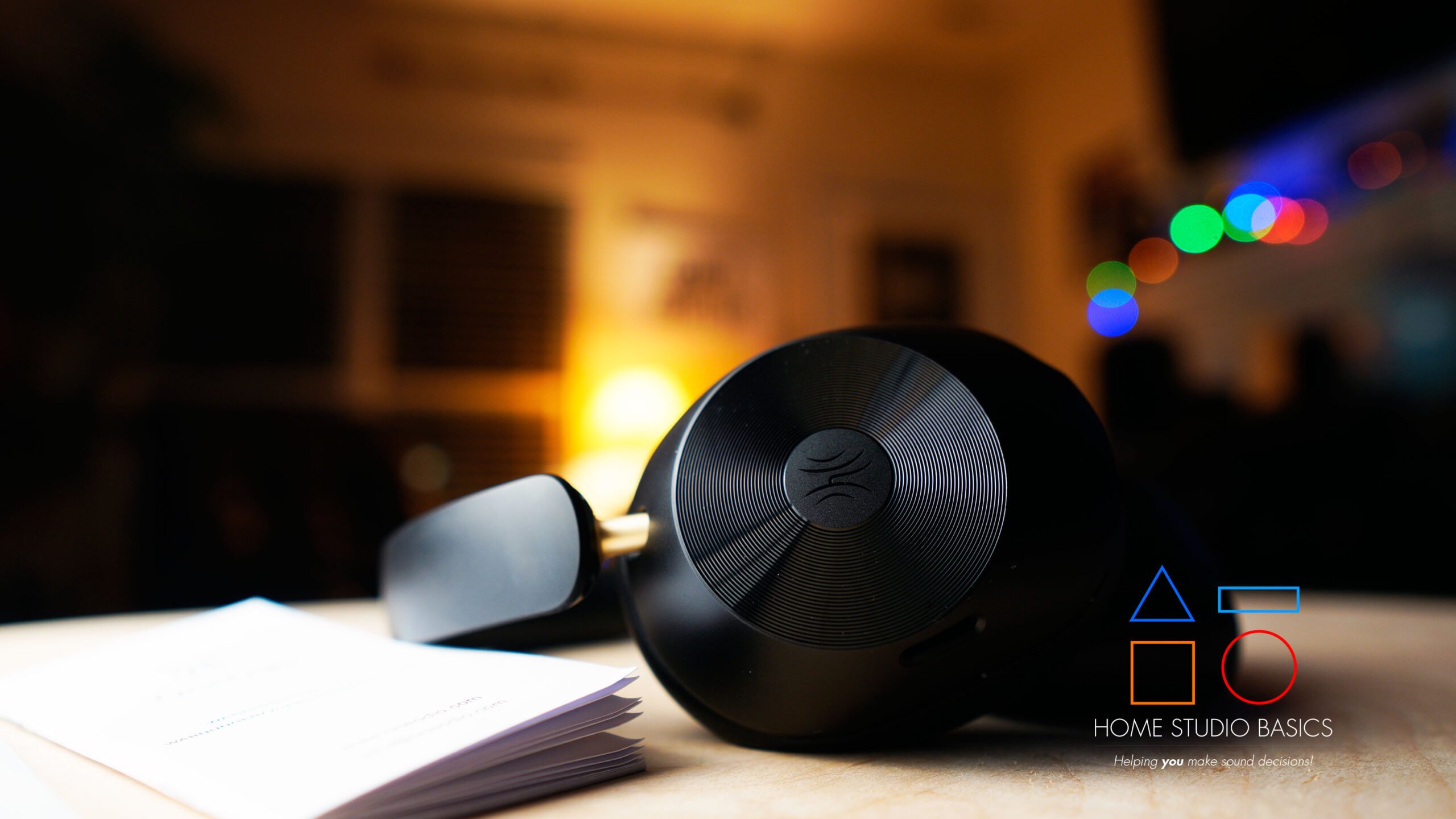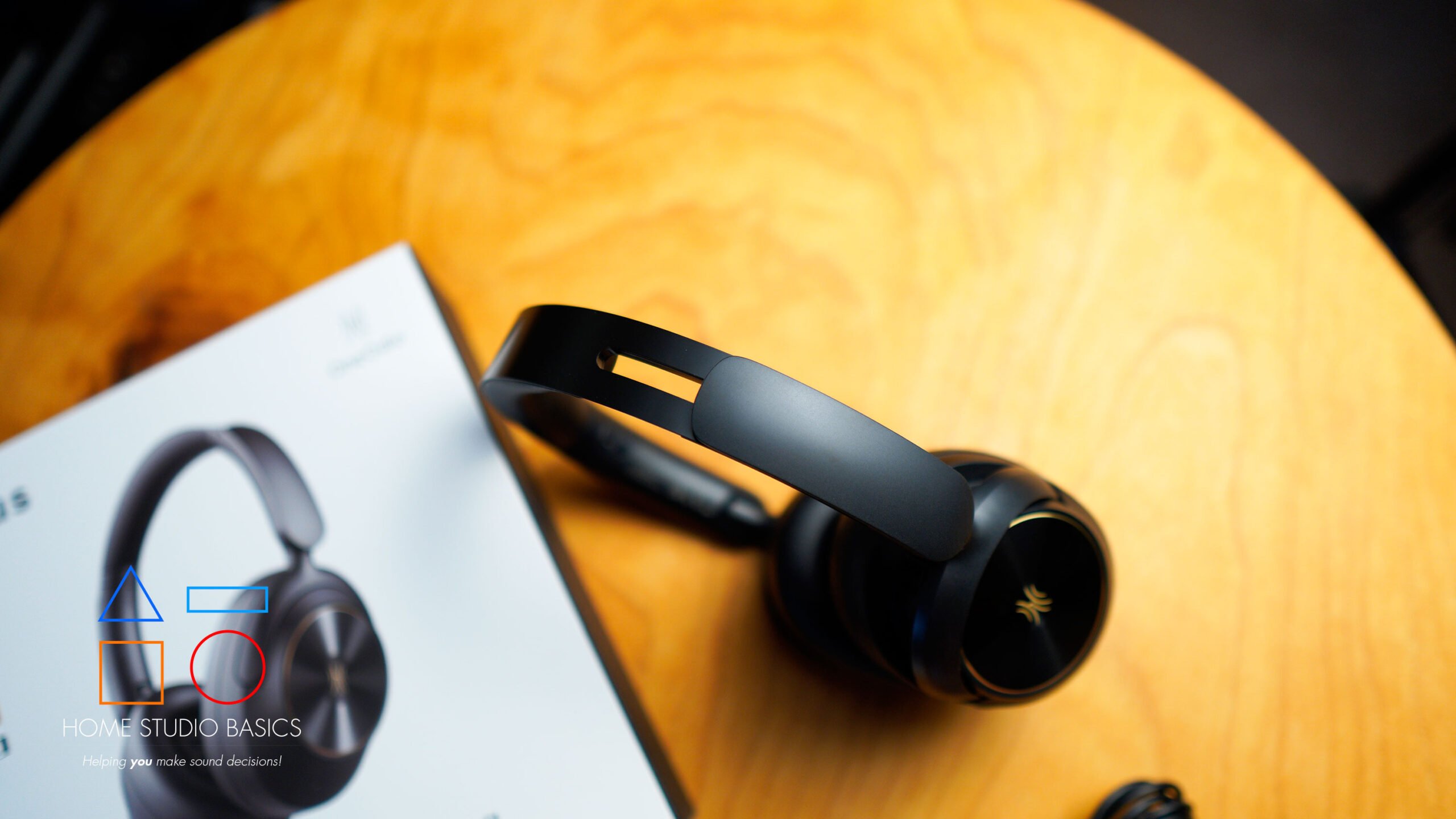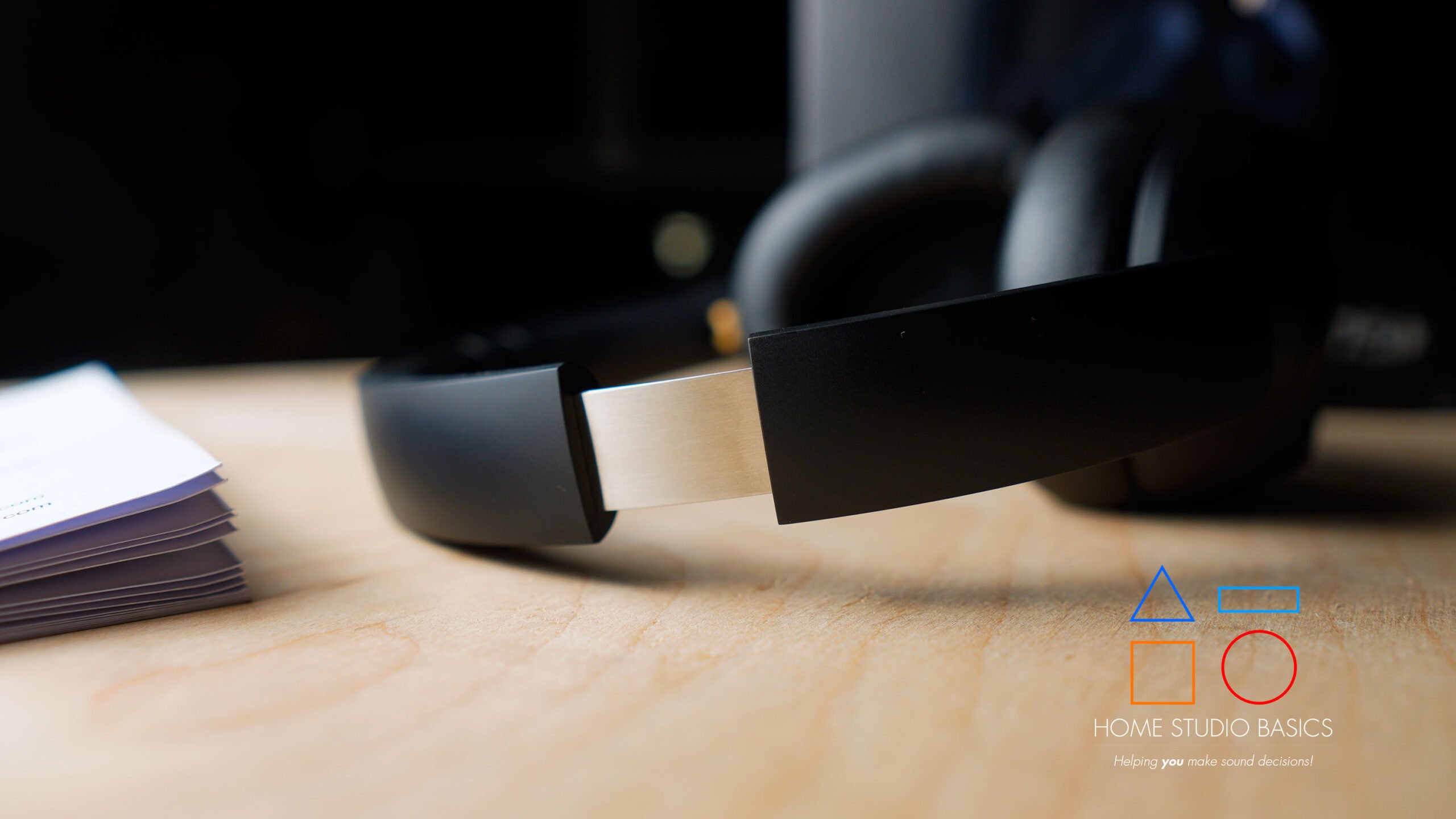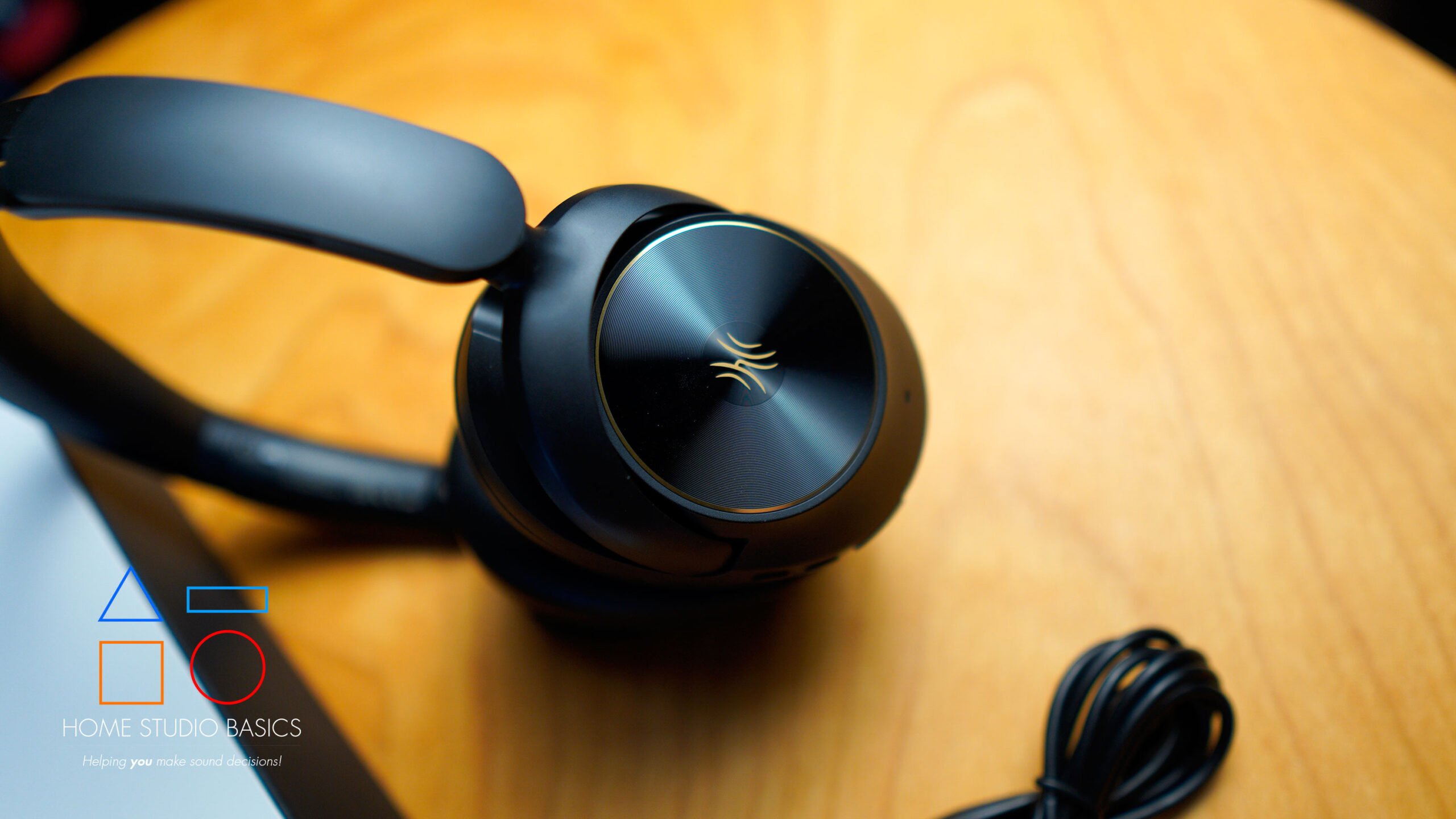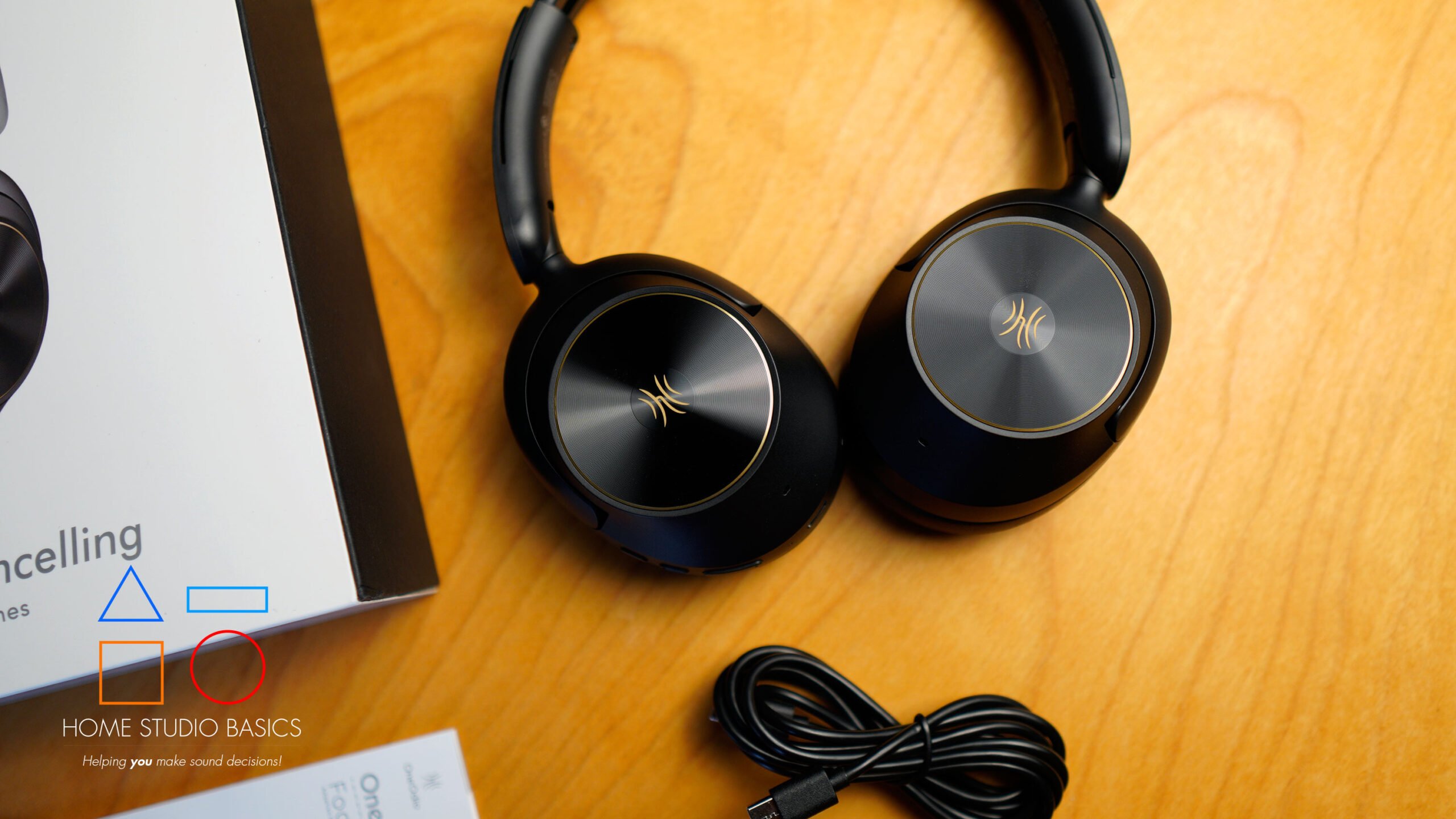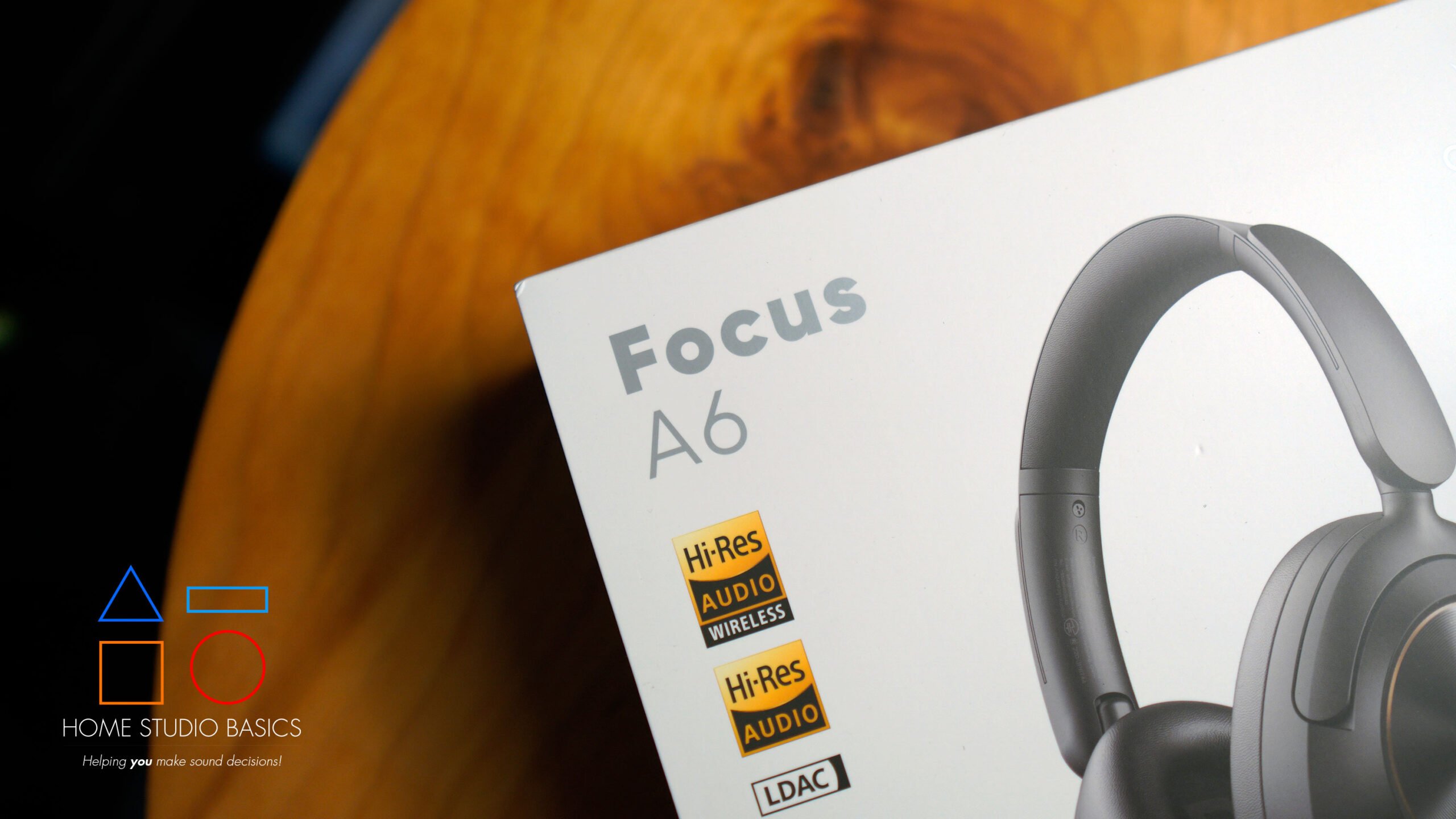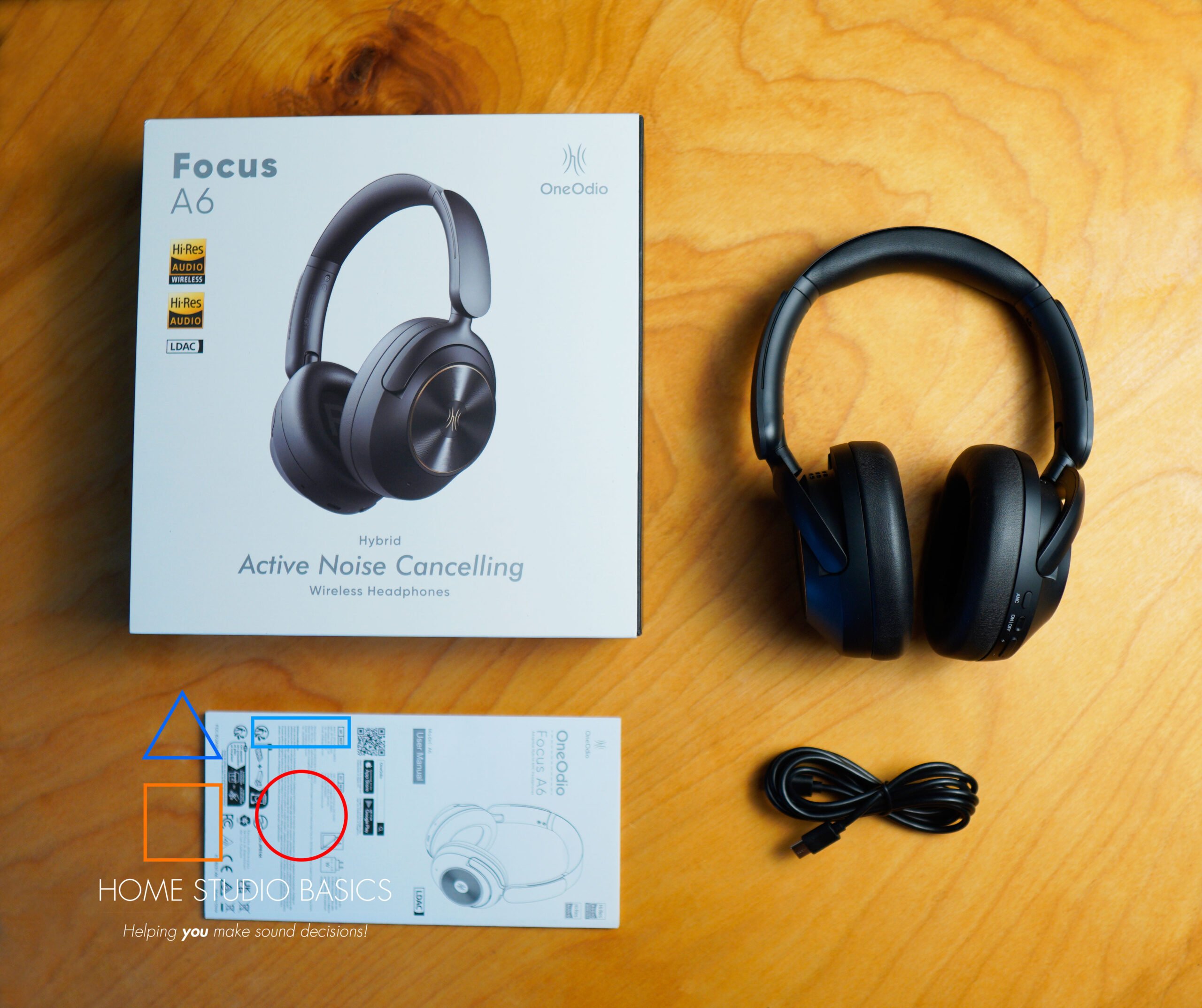Greetings mate and Welcome aboard!
Stuart Charles here, HomeStudioBasics.com helping YOU make sound decisions, so…
Video Discussion
Today’s review will cover OneOdio’s Focus A6, a noise-cancelling Bluetooth headphone in a line of a few, including the Focus A10 and Focus A5.
Is the A6 a better-tuned version of its predecessors? Or is it another product plagued with problems?
Today, we’ll dissect it all and help you make a sound buying decision. My goal is to help you, but I’m also trying to help companies make better products.
By the time you’re finished reading this article, you’ll know if the A6 is worth the investment. If it isn’t, I’ll point you in the direction of something that is.
With that, let’s dive in!
All specs, box contents, and pricing/deals toward the end.
Build Quality
By this point, I’ve come to expect almost impeccable build and excellent overall design from OneOdio, and the A6 doesn’t disappoint. Compared to the A5, it shares about the same overall look and aesthetic, with some subtle differences:
This time, their logo is adorned in gold, with a gold ring around the circumference (seen above).
This helps the A6 stand out more, and it also looks better visually; appearing more striking and handsome.
Button layout on each is also slightly different.
On the A5, it goes Volume +/-, LED light, Power, ANC, USB-C.
The A5’s text indicators look a bit more professional to me, but in the grand scheme of things, it’s not a big deal. Instead of a power symbol, the A6 simply says “ON/OFF.” The text is also white vs. bronze for the A5.
Both sets of cups rotate in around 45 degrees and out 90 degrees.
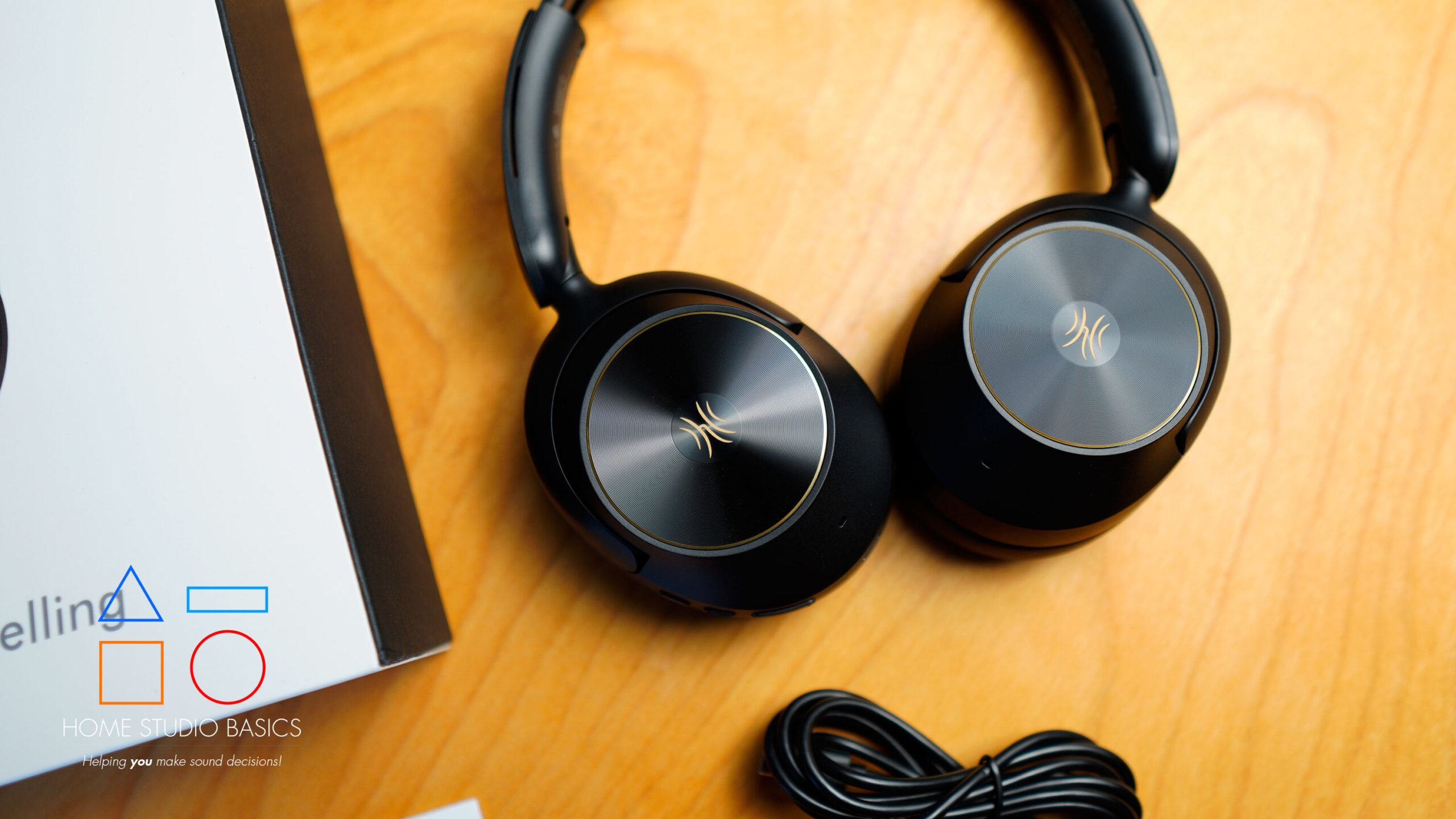
Both have faux leather padding, but the cups on the A5 (both the padding and the earcup itself) are fatter.
That said, the A6’s cups afford more real estate inside for your ears, though they feel pretty similar on your head at the end of the day.
The headband padding is also similar, but the bale structure and adjustments are fairly different.
Both have rods that rotate the cup around, but the A5 does not have a traditional-looking bale seated on the cup itself. This means the cups on the A5 cannot really move downward, a nice added flexibility bonus for the updated A6 and one that could prevent snapping/breakage down the road.
The headband adjustment is also a bit different.
The A6’s looks to be a thin piece of what I assume is metal that slides in and out of a tiny slit. There’s also a cylindrical-looking hole in the middle.
The A5’s is your basic shiny metal adjustment seen on 95% of consumer products, but both function fine. Time will tell if the A6’s newer configuration succumbs to breakdown, but given OneOdio’s track record of solid workmanship, I’m fairly certain everything will be just fine.
I’ll update the article if anything changes.
Sound
I’ll start by saying that the A6 doesn’t necessarily sound bad from a strictly consumer standpoint. Songs like Freddie Joachim’s “Was It a Dream” strike with decent authority, and you’ll likely enjoy listening to it; to an extent.
The problem with the A6 and the others that came before it is a matter of resolution; a hugely important component of music and one that’s kind of glossed over in OneOdio’s consumer line of products.
Instead of each note, vocal, guitar pluck, etc., standing out as its own individual event and something that can be dissected under a microscope while also being part of a greater whole, everything feels blended together like mashed potatoes, butter, garlic, and whatever else you like with YO MEAL.
Songs have no character, no soul of their own. They’re just walls of sound basically (mostly bass). This is an issue that’s permeated cheap consumer headphones since the dawn of time (well, since I was a wee lad anyway).
I’d liken the A6 to a headphone that’s a cut above something you’d find hanging on the shelf of your local drugstore. It’s a status quo type of product.
To further illustrate the point, I’ve been reading a book called “Every Man’s Battle” by Stephen Arterburn and Fred Stoeker. In this book, they discuss the difference between desiring the excellence that men crave from worldly pursuits vs. the perfection that comes from obedience to the word of God.
They used a perfect analogy of businesses in search of the former (excellence), but not necessarily perfection. If perfection were the goal, why would there be a need for hundreds of thousands of different products? This is something I’ve been harping on for years now, both in articles and videos. It’s simply not necessary to make dozens of headphones if you can get it right the first time. But of course, that’s not the aim.
As the book so eloquently points out,
This is rather interesting because it’s exactly how I would describe OneOdio. To me, they’re a good business. They make functional products that work and are built very well. I’ve never had an issue with any of them over the last few years. Their headphones are also utilitarian, practical, and very comfortable. They look great and do the job.
But the sound has always been an issue, and here it creeps up again.
That said, I’m happy to report that they have improved significantly from the A5; a headphone that sounds considerably bloomier, blobbier, and muddier than the A6.
This can be immediately heard on Tokyo Tea Room’s “I’m Just Human.” The A5’s bass is a complete mess, but the A6 tones it down enough to make the track listenable.
So, at least we’re headed in the right direction. Did OneOdio take my feedback seriously? Who knows. I’m just some guy, but my goal has always been to help companies make better products.
The A6 still isn’t tuned as well as the Kiwi Ears Ardor, but it’s a definite improvement from its older siblings, A10 and A5.
Related Video:
That said, and as mentioned above, the problem of little to no resolving power still exists, but it is improved to an extent here over the pretty awful sound of the A5.
App Feature & EQ
Additionally, OneOdio provides a convenient app for you to EQ the sound to your liking. And trust me, you’re going to need it. Fortunately, they make it pretty easy to download, just scan the QR code on the front of the User manual, follow the prompts, and download. From there, open the app and head down to the Equalizer.
It took a bit of finagling, but I was able to settle on a pretty decent EQ profile that elevates the A6 from meh to acceptable/pretty good.
I appreciate the app itself as well. It’s designed beautifully and works seamlessly. That said, as a producer, I would like to see more flexibility out of the frequencies, but I can’t complain too much. You can draw out the curve most appropriate, and the one pictured below is pretty close to ideal as far as the A6 is concerned.
With the mud/bloat of the mid/high bass cut out, resolution is improved a bit, and it sounds much better at comfortably loud volume levels. Mos Def’s “Hip-Hop,” for instance, sounds surprisingly decent with this custom EQ.
Even so, I’ve always been staunchly opposed to having to fix something that’s broken, especially after you’ve spent a bunch of money. There’s no reason for anyone to have to make something listenable, and that’s always been my issue with companies that don’t tune their headphones right the first time.
What makes the Ardor a better purchase than the A6 is, of course, resolution, but it’s also tuned almost perfectly out of the box.
Without EQ, the mid-range on the A6 is still too recessed for my liking and fairly drowned out, and when compared to the superior Ardor, you get that crisp, lively presence and great clarity that ties everything together like the Dude’s rug.
“Ataraxia” by Alcynoos and Alberto Droguett is actually a perfect example of what I’m talking about.
The A6’s rendition sounds pretty decent until you put it up next to the Ardor.
The Ardor understands that to make a bass-oriented headphone sound good, certain frequencies need to be cut. The A6 is getting there like Flying Lotus, but still needs to clean up some of the mud and bloat. Again, this is a huge step in the right direction over the A5, but it still needs refinement without an EQ profile like the one I used.
By contrast, the Ardor strikes with near impeccable authority, and the bass is clean and has impact in the right areas while ensuring the mids don’t get drowned out. In other words, the frequencies that muddy up the sound signature are out of the way. This invariably helps with clarity and overall resolution.
There’s a reason why they tuned the Ardor almost exactly like my benchmark standard closed-back FiiO FT1. This is the type of Harman-ish response that works, and more companies need to latch on to it.
- Required Reading: What is The Harman Response Curve?
If I had to guess, the folks at Kiwi Ears were probably like,
“All these Bluetooth consumer homies are doing it wrong. Let’s just copy FiiO and rake in the monies.”
And I’m completely fine with it. At this point, there’s nothing new under the sun. We know what sounds good and what doesn’t.
As a producer, it’s frustrating because it sometimes feels like I’m banging my head against a wall trying to get companies to listen, but I digress.
The A6 is certainly not an awful-sounding headphone. It just needs work.
Before we give a final verdict, let’s go over some things I liked and things that can be improved.
What I liked:
- Much better overall tuning than the A5. It seems OneOdio is listening, but they’re not quite there yet.
- Build & Comfort. As always, both are nearly impeccable. The A6 is excellent on the go, with a compact, beautifully understated and utilitarian profile.
- App/EQ Feature is pretty cool. With it, you can easily adjust the FR to your liking. It’s also bug-free, works seamlessly, and is designed with usability in mind.
- Type-C Port. In addition to charging, the Type-C slot can also function as wired headphones when directly connected.
What can be improved:
- Tuning and overall resolution still need adjustment. While a somewhat enormous step-up from the A5, the A6 is outclassed by the Kiwi Ears Ardor in both of these metrics. Songs still feel as though they have a layer of mud and haze covering them, and the mid-range is still too recessed for my liking.
- Unboxing experience. As you’ll see in the video, it wasn’t good. The box is a bit of a pain to open, and the piece inside that supports the headphones is a mish-mosh. A better presentation will go a long way here.
- No case. The Ardor comes with a beautiful and rugged hard shell carrying case. At well under $100, this is quite a significant bonus and shouldn’t be overlooked. OneOdio should absolutely include one in future releases.
Final Verdict
OneOdio’s Focus A6, despite its issues, is an enormous improvement from the A5 and a solid step in the right direction. It’s built well, comfortable, and possesses an overall more attractive look while retaining the great button layout inherent in the A5.
If the A5 was unlistenable due to its awful sound, the A6 certainly doesn’t make me want to rip it off my head in disgust.
That said, it’s still muddy and the bass is still overblown, especially when compared with the Ardor’s superior tuning and resolution. It absolutely needs EQ to sound acceptable. OneOdio, if you’re reading, you’re close to having a fantastic product on your hands.
They say 7 is the number of perfection. I would love to see a Focus A7 with all the improvements/correct tuning + a hard shell carrying case.
OneOdio Focus A6
Price: Check eBay! | Check AliExpress! | Check Amazon (Use Discount Code A6STUDIO for 15% OFF)
Check OneOdio (Use Discount Code A6STUDIO for 15% OFF)
In The Box
1x OneOdio Focus A6 ANC Headphones
1x USB-C to USB-C Cable for Charging and Audio
1x User Guide
Specifications
- Brand: OneOdio
- Model: A6
- Product Name: Focus A6
- Battery Type: Polymer lithium-ion battery
- Battery Specifications: DC 3.7V, 500 mAh, 1.85 Wh
- Input Power: 5V, 500 mA
- Charging Port: USB-C
- Charging Time: ≈ 1.5 hours
- Battery Life: ≈ 75 hours (ANC off), ANC on: ≈ 40 hours
Well, that’s about it for today my friend! I hope you’ve enjoyed this OneOdio Focus A6 Review and came away with some valuable insight.
Questions? Comments? Requests? Did I miss the mark on something? Please leave them down below or Contact me!!
If you love what I do here and want to support the blog and channel in a more personal way, check me out on Patreon and discover all the value I have to offer you.
Does the A6 seem like a worthwhile investment despite its issues? What are your experiences with Bluetooth products? I would love to hear from you. Until next time…
All the best and God bless,
-Stu

